How blockchain can clean up the fishing industry
From the boom in car ownership to the growth of cheap fashion labels, what has benefited the consumer hasn’t always been good news for the planet. It’s a similar story for the food on our plates, where keeping supply plentiful and prices low too often involves unethical practices.
This is readily apparent in the seafood industry, which has steadily expanded in the past 50 years. Per capita consumption of fish has risen by 90% in the late Sixties and around 85% of global seafood exports by volume originate in the world’s developing nations.
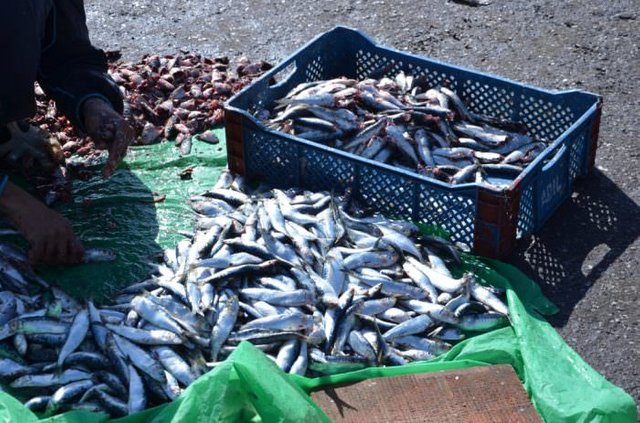
Waste in the fishing industry has become endemic: Shutterstock
At the same time, waste has become endemic. Up to 50% of fish are discarded and wasted in the supply chain post-harvest. Unsustainable practices are rife, with an estimated 89% of global fish stocks now either fully exploited or over-fished.
Consumers are increasingly being fooled, with around one on three seafood products bearing a label that deliberately misleads the purchaser. For certain species of fish, the percentage of fraudulent labelling is even higher.
Campaigning group Oceana, which is dedicated to protecting and restoring the world’s oceans, has produced several reports on seafood fraud. One study found that more than two-thirds of purportedly “wild-caught” Atlantic salmon was actually the cheaper fish-farm produced version.
It’s not surprising that fraud is rife when prices for certain species are high. A recent auction at Tokyo’s iconic Tsukiji fish market saw the winning bid for a 405kg bluefin tuna come in at 36.5m yen, equivalent to around $320,000.
Explosive growth
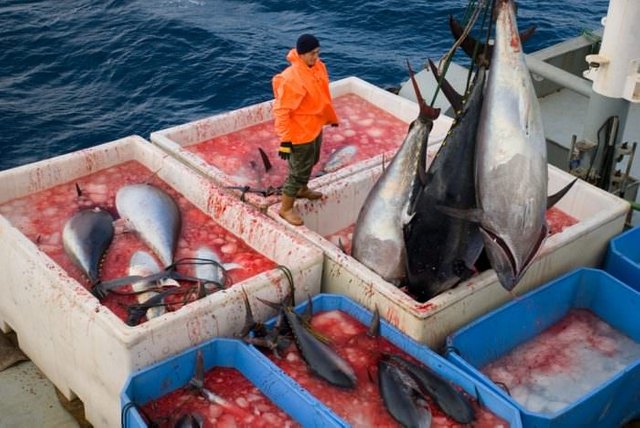
The WEF report notes the “explosive growth” of the fishing industry: Shutterstock
The World Economic Forum (WEF) outlined the full scale of the problem of illegal fishing in a recent report. It noted that the second half of the 20th century saw “explosive” growth in fish harvesting “as large industrial ships ventured out from local waters to reach every corner of the sea, trailing miles of hooks or nets large enough to catch Boeing 747s.
Two years ago, a study found that total fish catches around the world were falling three times faster than the United Nations (UN) had predicted, due mainly to overfishing depleting stocks.
The WEF report singles out illegal, unreported and unregulated (IUU) fishing as a major challenge facing the industry. It notes the estimate by the UN’s Food and Agriculture Organisation (FAO) that some 20% of the global fish catch is IUU – robbing governments and legitimate fishers of up to$23bn annually.
The appetite for tackling this issue is clearly growing, with various related initiatives emerging in recent years. They include the Tuna 2020 Traceability Declaration and the Global Dialogue on Seafood Traceability.
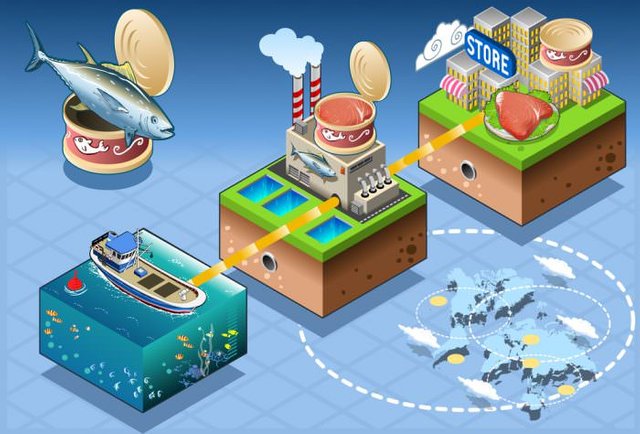
Tuna traceability is a major issue in the Pacific islands: Shutterstock
Tuna traceability is a major issue in the Pacific Islands. Not only have unsustainable and illegal fishing been rife – the tuna fishing industry is also marked by human rights abuses, including corruption, illegal trafficking and human slavery on tuna fishing boats.
The WEF report attaches figures to the cost of mismanagement, citing a recent study that suggests improved practices across the world’s fisheries could increase the total annual catch by 16m tonnes and increase yearly profits by $53bn, yet at the same time improve the health of ocean ecosystems.
“Global markets could play a vital role in creating incentives for better management by offering the prospect of better prices and better market access for fish that come from well-managed fisheries,” say the report’s authors and using the potential of blockchain could help to unlock this opportunity.
Advocates of the new technology include members of the global fishing and retail industries and the Friends of Ocean Action network. The latter, described as “an ambitious new global partnership to save life in the ocean”, was launched early this year at the WEF’s annual economic forum in Davos. Switzerland.
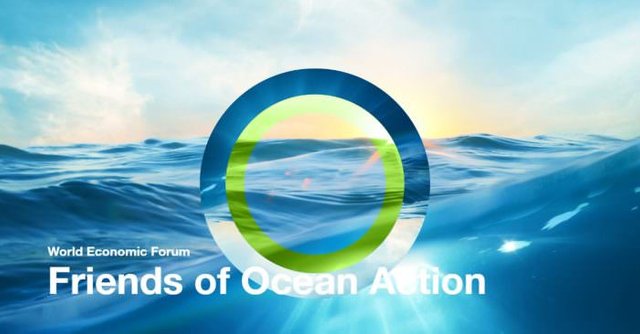
Friends of Ocean Action was launched in January at the WEF Forum in Davos
A multi-stakeholder partnership, Friends of Ocean Action includes leaders from science, technology, business and non-governmental groups and draws together 40 committed and influential ocean activists and thought leaders. They will aim to shape global action in delivering the United Nations Sustainable Development Golan no 14, which is to conserve and sustainably use the world’s oceans, seas and marine resources.
Blockchain’s role
Along with other technologies, the new partnership has set to work to assess blockchain’s ability to eradicate IUU fishing.
The possibilities include blockchain-enabled smart contracts that could, for example, underpin innovative tenure arrangements that give specific resource rights to specific communities or fishers.
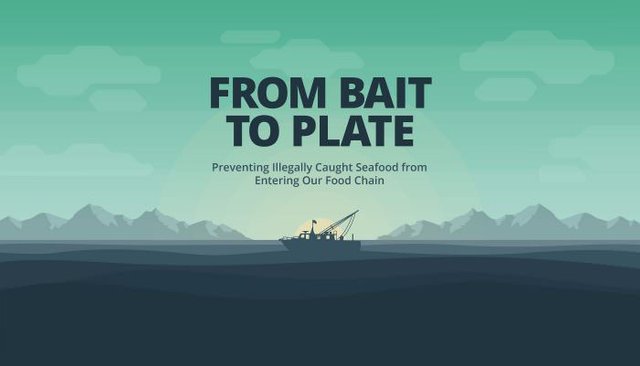
The WWF’s ‘from bait to plate’ initiative: World Wildlife Fund
A further use for blockchain – already being explored – is in tracking a fish from “bait to plate”, providing a transparent view of the fish’s origin. This could be complemented by DNA barcoding, enabling the rapid identification of seafood in trade by matching fish products to a standardized genetic library for all fish species.
This is the aim of a recently-launched initiative by the World Wildlife Fund (WFF) in Australia, Fiji and New Zealand, which is tracking the “bait to plate” journey of tuna from the Pacific Islands. The pilot project has seen the WWF partnering with US tech innovator ConsenSys, tech implementer TraSeable and the tuna fisher and processor Sea Quest Fiji.
The high level of transparency provided by the shared database accessible to everyone in the network via blockchain means that consumers can gain assurance about the provenance of the fish on their plate. They can scan a code on any item before buying and know where the fish comes from – and whether it is “sustainable, ethical and legal”.
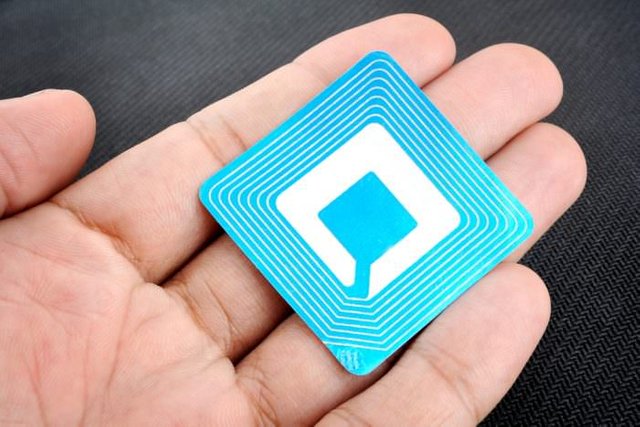
Radio frequency identification (RFID) tag: Shutterstock
The WWF pilot project combines the use of radio frequency identification (RFID) tags, quick response (QR) code tags and scanning devices. They collect information about the tuna’s journey from bait to plate at each stage of the supply chain.
While the technology itself isn’t new and has previously been used for supply chain tracking, for the first time the collected information is recorded via blockchain technology.
Tracking begins the instant the tuna is landed and attached with a reusable RFID tag on the vessel. Devices fitted on the vessel, at the dock and in the processing factory then detect the tags and automatically upload information to the blockchain.
After the fish is processed, the reusable RFID tag is switched for a cheaper QR code tag, which is attached to the product packaging. The unique QR code is linked to the blockchain record associated with the particular fish and its original RFID tag. The QR code tag is then used to trace the rest of the journey of the tuna to the consumer.
Linking tags has so far proved fairly easy as the project focuses on whole round exports – that is, the whole fresh fish minus head, gills and guts. It becomes slightly more complicated when the fish is cut up into loins, steaks, cubes and cans, but the project team can now link the QR code tags on the packages of the processed fish with the record of the original fish on the blockchain.
The initiative has also shown that while RFID tags could potentially be used throughout the entire process, they could prove too expensive for the fishing industry’s smaller operators and exclude them if the scheme expands. There is also the potential for using near field communication (NFC) devices in future to track the fish on its journey to the consumer.
Active companies

Blockchain companies that are involved in this particular field include Vihaan and the Linux Foundation’s Hyperledger Project. The latter has a sub-division, Sawtooth, that focuses specifically on developing solutions for sustainable fishing.
A case study produced by Hyperledger Sawtooth describes how it records the journey of seafood from ocean to table and can be used in other applications. “Like the fish in this study, Internet of Things (IoT) sensors can be attached to any object entrusted to someone else for transport, with trackable ownership, possession, and telemetry parameters such as location, temperature, humidity, motion, shock and tilt.
“The final buyer can access a complete record of information and trust that the information is accurate and complete.” And while the individual may not always wish for the full history of their fish supper, it will certainly be welcomed by supermarkets, individual fishmongers and restaurants.
As the WEF’s joint report with PwC – Building Blockchains for a Better Planet – suggests, just as the technology can help overcome illegal activities in tracking fish from “bait to plate” it can equally be used for commodities such as palm oil, beef and soy from “farm to fork”. Such transparency “is vital in influencing consumer decisions, updating supply chain practices and triggering new governance arrangements.”
Case Study: Fishcoin – an ecosystem solution to traceability issues

Eachmile Technologies is an innovative seafood company based in Singapore. Alastair Smart, its chief operating officer (COO) reports that Eachmile is looking deeper to develop an open source data ecosystem that other tech companies can utilise for their own IoT sensors and dApps. Their initiative called “Fishcoin” could be the key to incentivising data collection where it is needed most – the developing nations that harvest the 90% of our global seafood.
Eachmile, in collaboration with the GSM Association – an international organisation representing more than 750 mobile phone operators worldwide – has developed a way to give fishers, and fish farmers a “top-up” on their pre-paid mobile data plans in exchange for collecting data on their supply.
Data plans are one of the few universal commodities that seafood producers in developing nations have. In many regions they often don’t have bank accounts, however almost all have mobile phones. Data plans in many developing nations are pre-paid, and extra time on a data plan is a valuable commodity that is treated like a currency.
Blockchain in action
Eachmile has introduced a blockchain-based electronic catch system, called mFish, which is a browser based application that can be accessed on any browser-accessing mobile phone. The application allows seafood producers to record catch data on their phone, and present that data to the next step in the supply chain.
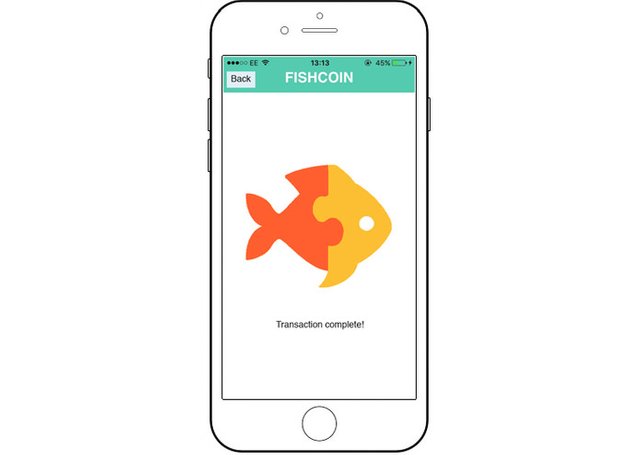
With Fishcoin tokens used as the incentive to add data, the cost of adding that data to mobile phone plans will be paid by various downstream actors in the supply chain, such as importers who need the data to import the seafood and wholesalers in order t0 to meet buyer requirements.
It’s a peer-to-peer (P2P) ecosystem where data is exchanged for tokens between actors, as seafood is exchanged for currency between actors.
Smart explains that “traceability should be seen as the “tracks” that full-chain traceability can run on which will help increase the amount of data that flows along those tracks and drive efficiency inside the industry to improve sustainability, and a company’s bottom line.
Eachmile have also partnered with other prominent organisations like the UN World Food Program’s Sustainable Development Goal (SDG2) Advocacy Hub and together will present the Fishcoin model to the upcoming New York Global Citizen Festival on September 29. The aim is to utilise significant partnerships such as these to rapidly scale the essential capture of data for the global seafood industry in order to obtain the information needed to bring real sustainability
Story by Graham Buck
Source https://dex.openledger.io/how-blockchain-can-clean-up-the-fishing-industry/
Follow OpenLedger!
Welcome.
I am a Fish-bot that supports fishing posts.
Thank you for publishing the post and use of the myhuntingfishing,fishing or pl-wedkarstwo tag, which I rewarded with "upvote".
If you care about the development of this bot, all you need is to like this comment, and the power of this fish-bot will grow. Thank you
Witaj.
Jestem Rybo-botem wspierającym tag pl-wedkarstwo i myhuntingfishing
Dziękuje Ci za opublikowanie posta i użycia tagu pl-wedkarstwo lub myhuntingfishing oraz fishing, który nagrodziłem "upvoutem". Jeśli będzie Ci zależało na rozwoju tego rybo-bota wystarczy byś w rewanżu "upwoutował" czyli polubił ten komentarz a moc tego rybo-bota będzie rosła. Dziękuje
Добро пожаловать
Я рыба-бот, который поддерживает рыболовные посты.Спасибо за Ваше сообщение и использование тегов pl-wedkarstwo, fishing или myhuntingfishing который является наградой «upvoutem ». Если вы заботитесь о развитии этого рыцаря, все, что вам нужно сделать, это «взволноваться» в матче-реванше, то есть, как этот комментарий, и сила этого fisboot будет увеличиваться. спасибо